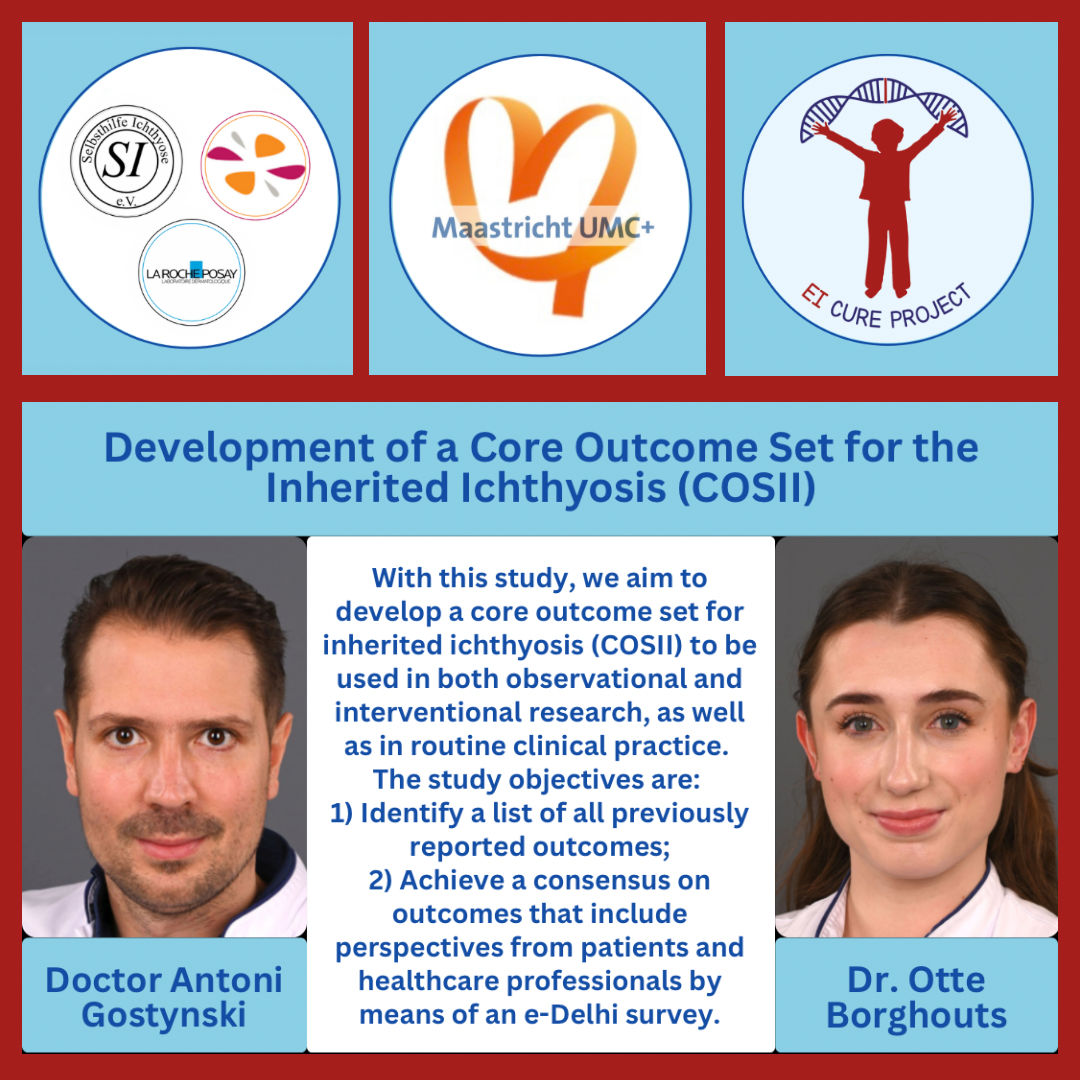Development of a Core Outcome Set for Inherited Ichthyosis (COSII)
Doctor Antoni Gostynski and Doctor Otte Borghouts
Project Duration: 2 year Study; Project Start Date: 1st July 2025
Total Project Cost: EURO 82,000
EI Cure Project Award: EURO 15,000 over 2 years;
Project Collaborators: Maastricht UMC+, Selbsthilfe Ichthyose, Ichthyosis Netwerken, La Roche Posay
Development of a Core Outcome Set for Inherited Ichthyosis (COSII
To help explain this study more easily, our friends and co-collaborators at Ichthyosis Netwerken made this helpful video.
(You might recognise the voice of Founder Helen Lill as the voiceover!)
Summary of the Project
With this study, we aim to develop a Core Outcome Set (COS) for Inherited Ichthyosis (COSII) to be used in both observational and interventional research, as well as in routine clinical practice.
The study objectives are:
Identify a list of all previously reported outcomes to be identified through literature review using the PRISMA method;
Achieve a consensus on outcomes that include perspectives from patients and healthcare professionals by means of an e-Delphi survey.
Genetic variant included in the Project
All types of Inherited Ichthyosis are represented in this study
Types of Epidermolytic Ichthyosis represented: KRT1, KRT2, and KRT10
Main outcomes anticipated from the Project
We anticipate that our research will result in several key outcomes. First, the main product of this research will be a comprehensive, standardised set of core outcomes that could be used by all future studies on inherited ichthyosis as well as in clinical practice. The COS will serve as a guideline for researchers (and clinicians) to measure and report their findings in a consistent way, making it easier to compare and combine data across different studies. By including different stakeholders, and thereby multiple perspectives on the disorders, we expect to be able to develop a detailed list of outcomes that is relevant to anyone dealing with inherited ichthyosis (in research settings as well as in routine clinical practice).
Indirectly, we expect that providing this standardized framework on what should be measured and reported in clinical studies, could contribute to future studies becoming more effective and reliable. This will facilitate the assessment of (new) therapies, potentially speeding up the process of finding better therapies for inherited ichthyosis.
In the long term, these efforts could contribute to enhanced patient care. By focusing on these outcomes, our study aims to make a lasting impact on how inherited ichthyosis is researched and treated.

